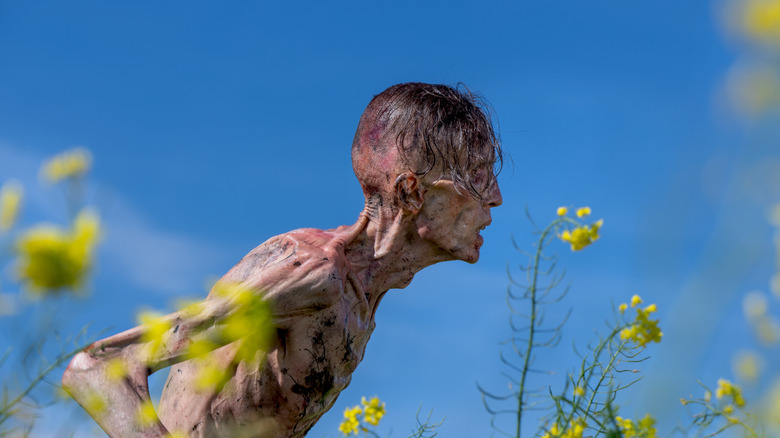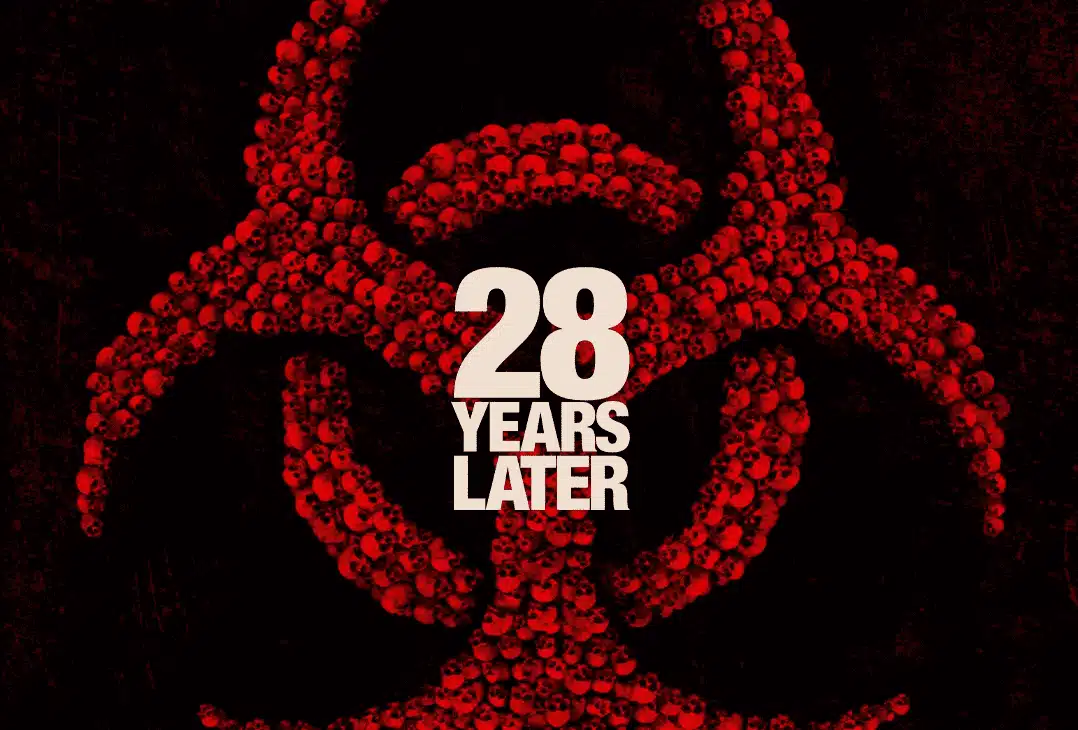Table of Contents
A Near-Perfect Zombie Masterpiece (Almost)

The film “28 Days Later” by Danny Boyle is very much on its way to being qualified as one of the very best horror movies with zombies that have ever been made. It is important to mention that the term “infected” the director comes up with does not change the fact that the menacing creatures are the kind of beings we usually associate with zombies. Furthermore, the movie builds this intense, frightening momentum brilliantly. However, the ending finally arrives. Consequently, please rest assured: this review will absolutely not reveal any specific plot spoilers, but it becomes practically impossible to discuss “28 Years Later” effectively without highlighting the simple fact that its conclusion lands with a distinctly awkward and disappointing thud.
The Trilogy Setup Problem
The core reason for this jarring ending stems directly from modern Hollywood’s approach. Considering that the studios have completely gone away from just a single and self-contained narrative, “28 Years Later” is made as the very first part of a completely new trilogy. In fact, the second part, “28 Years Later: The Bone Temple,” is already confirmed, and the premiere is scheduled for January 2026. In reality, the film is the first of three, so the ending of “28 Years Later” is absolutely not decisive and, in any case, as in a traditional way, not a complete and proper conclusion.
On the contrary, it unequivocally finalizes the dramatic arc of the current story, setting the stage for the next one. Unfortunately, the necessity of having to provide such an ending takes nothing away from the fact that everything leading up to the sequel setup is great, brilliant, and particularly impressive. Indeed, the movie as a whole is solidly scary, occasionally bloody, but quite emotionally touching one through the path of the story. Afterward, unexpectedly, but totally within the spirit of the movie, a coda appears that is so weird, so contrary to the already set tone, and leaving simply a very unpleasant and bad impression, with quite a different taste in the mouth of the viewer.
Lingering Disappointment and Audience Confusion
So, do those final confusing minutes completely ruin the otherwise excellent film that preceded them? Thankfully, the answer is no; the overall quality manages to shine through. Nevertheless, I personally wish with significant intensity that those final scenes simply did not exist at all. Furthermore, I genuinely wish director Danny Boyle and writer Alex Garland had chosen the wiser path: leaving the powerful story they crafted well enough alone and allowing the audience to simply sit with the emotional weight of what was otherwise a potent horror saga.
Additionally, I cannot help but actively wonder how this bizarre ending will actually play for general audience members who walk into the theater completely unaware that this is deliberately the first part of a planned trilogy. For instance, I could clearly tell during my own screening that several people, obviously not clued into this trilogy information beforehand, were left utterly baffled and confused by the film’s final, jarring moments.
The Story So Far
“28 Years Later” is essentially the third film in the franchise, with its origins dating as far back as 2002. The series commenced with the film titled “28 Days Later”, which had been conceptualized by the film director Danny Boyle and writer Alex Garland, and was about a horrifying incident in which riots take over the whole of Britain. The bad news was that if a person was assaulted by the infected, he/she would immediately become another infector, start biting people, and set a bad example for everyone.
One of the reasons behind the rough and raw visual style of the first film is that the whole genre, to be more precise, horror, was shot using Anthony Dod Mantle’s digital cameras, very early digital cameras indeed. It is still fresh in quite a few people’s memories, the image of Cillian Murphy’s character strolling through the deserted streets of London. A sequel was crafted next, carrying the title of “28 Weeks Later,” but Danny Boyle stepped back from the director’s seat, while Alex Garland took up the narrative endeavor a bit.
The Original Team Returns
Great news for fans: Danny Boyle, Alex Garland, and Anthony Dod Mantle are all back working together on “28 Years Later.” Even better – they’ve made the movie style even stronger this time. While the new film doesn’t have the exact same grainy, digital camera look as the first one, Boyle and Mantle use lots of clever visual tricks to surprise viewers. For example, Boyle and the editor Jon Harris often suddenly cut in real-world news clips or scenes from other movies right in the middle of tense moments. Also, at some critical points in the film, they initiate a full freeze of the action (akin to “The Matrix” “bullet time” effect) and simultaneously revolve the camera to exhibit blood spouting from numerous directions. The result of all this is indeed fresh and weird in a positive sense, a feeling that always makes you feel a bit uncomfortable.
Jumping Ahead in Time
After a shocking opening scene that shows extremely gross and disturbing images right away, “28 Years Later” quickly moves to its main story. Just like the title says, the movie takes place 28 years after the Rage virus first spread. During those years, the rest of the world managed to contain the disaster by doing one drastic thing: they completely isolated Britain. They cut off the whole country from everyone else with strict quarantines. Later in the film, Alex Garland’s script makes a really important point: outside Britain, most people have moved on with their lives, almost like they’ve forgotten that hordes of infected zombie-like creatures are still roaming around inside the sealed-off UK. This sets up a world where the immediate terror is contained but far from gone.
Why the Visuals Feel Fresh
Even though the movie doesn’t copy the old shaky, grainy style, the directors use camera work in exciting new ways to keep you on edge. They might show you something happening on screen, then suddenly flash a completely unrelated image for just a second to shock you. Another option is they may freeze the action of a violent scene, move the camera around it, and when they find a new approach, they will reveal it in a rather violent way. The stated methods do not serve as mere evidence that the scares are unpredictable but also make the scene really agitative, which certainly changes the typical horror moment making newness shockingly felt. The film is always coming up with creative ways to present old horror tropes as shocking and fresh as if they were new.
The World Moves On (But Doesn’t)
One of the most interesting ideas in the film is how differently people inside and outside Britain see the infection. While survivors trapped in the UK still face daily terror from the infected, the script shows us that the international community has basically pretended the problem is solved. Governments and ordinary people act like the nightmare is over, even though raging infected humans still control an entire country just across the water. This creates a tense backdrop where the characters know the world has abandoned them, making their struggle feel even more desperate and lonely against the terrifying infected enemies still hunting them.
Life on the Safe Island
First, it’s important to know that one group of people has managed to build a peaceful life on a small island, completely separated from the dangerous mainland where the infected roam. Next, a big reason they stay safe is because of how you get to the island. There’s only one path connecting it to the mainland – a narrow strip of land called a causeway. Thus, this route is not always accessible. It is likely that at high tide, the causeway will be completely submerged by water creating an insurmountable obstacle for transportation and the disease carriers.
The deficiency of such a route is the reason that ten-year-old Ethan has been brought up in the countryside. Spike’s character is played by the new actor Alfie Williams, who delivers an excellent performance. He manages to make him so authentic that the audience can believe in the character. Spike’s parent is his father called Jamie, who is a real macho person and his mother, Isla (played by Jodie Comer), is really sick. Unfortunately, she suffers from a rare and serious disease that even doctors can’t detect. The disease takes her energy from time to time, making her too weak to move.
The Scary Mainland Hunt
Additionally, the island community has an important custom for its young people. When they get old enough, they must go on a hunting trip to the terrifying mainland. However, they aren’t going to hunt animals. Instead, their targets are the infected people. Armed only with bows and arrows, Spike and his dad Jamie set out together on this dangerous trip. Unfortunately, the plan goes awry very soon and is a definite failure. The first 60 minutes of the movie are very intense and director Danny Boyle makes you feel it the most.
He builds this scary feeling bit by bit, and then suddenly shocks you with short, very bloody bursts of violence. Moreover, the infected creatures have changed a lot over the past 28 years. They’ve become like wild beast packs – naked, fast, and always moving together in big groups. Worryingly, these groups seem to be led by bigger, stronger infected called Alphas. Even more frightening, these infected seem smarter now. They show more cunning and intelligence than the simple rage-filled monsters seen in the earlier movies, making them much harder to escape or predict.
Spike’s Brave Journey to Find Help
Most importantly, while on this frightening hunt, Spike hears a rumor. He learns about a strange doctor who lives completely alone, hidden away somewhere on the mainland. People say this doctor might even be crazy. Later, we see that this doctor is played perfectly by Ralph Fiennes. Spike spontaneously comes up with an interesting thought: he is sure that this enigmatic doctor may be the one who is aware of the cure for his mother’s terrible condition. Due to his strong feelings, Spike decides that the only way to help her is by looking for this doctor.
As a result, Spike has embarked on a second, and even more dangerous journey. He is now traveling with his mother, Isla, who is currently in a very fragile state. They depart from the island and go past the forests and the plains, all the while risking their lives in various ways to reach their doctor without any trouble. In the end, even though the film is set in a huge and destroyed world, the story is actually very straightforward and to the point. There are no big government plots or missions to save the whole world driving the action. Instead, the entire movie revolves around one young boy’s powerful hope: Spike’s deep wish that he can somehow save his mom.
Surprising Heart in a Scary Movie
The conclusion was perplexing for many, but “Like a Video Game” pulls off something truly amazing; it amazes you in the heart without a typical zombie-filled horror movie conversion. Jodie Comer, who has the role of Isla (Spike’s mother), is indeed one of the most outstanding actors nowadays. Although she doesn’t have many battles interpreted, the essence of her performance is very important. The most significant thing that makes the movie very emotional is the very real feeling of love and kindness that the characters show each other, which is the film’s main emotion.

One can notice that it happens not only because of the things they say but because of the things they do, as a result, this strong relationship actually is the most vital idea that is taken as a basis for the entire story. So, the tears that come to your eyes in that movie come as no wonder at all. It is a real marvel to combine delicate and moving feelings with extremely cruel and bloody violence in a good way, especially in a film of the zombie kind. This powerful combination actually lifts “28 Years Later” way higher than most people thought possible, making it much better and more memorable than expected. That’s exactly why the way the movie finishes feels so annoying and frustrating – it clashes with the great stuff that came before.
Why the Ending Feels So Wrong
Not only the tone but also the way the final scenes are picturized are completely opposite of those of the first half of the movie. The sudden switch is so sharp and massive that you might feel like you just accidentally tuned to a totally different TV show! It’s possible that this crazy twist was deliberately done. I mean, let the truth be told, the next movie “28 Years Later: The Bone Temple,” is gonna be another movie with another director (Nia DaCosta, the director of the new “Candyman” is the new director here).
But the question remains, was it intentional or only a mistake? It doesn’t change the whole point. This ending makes you feel quite despondent, thus letting you down so much. In fact, it detracts from the main story. It would have been a much better option if director Danny Boyle had arranged this sequence after the main movie has been revealed or, indeed, maybe as a short clip during or after the credits (similar to many superhero movies).
The Good Stuff Stays With You
Even though the denouement is a source of major disappointment, it is still not able to erase the positive impression created by the movie. Danny Boyle and his staff have produced an extraordinary, intense feeling that captivates your senses in a very efficient way. They are good at making the gory and brutal episodes less intense by effectively mixing them with different weird aspects such as real-world news or other movies and a quite often ethically loud soundtrack. So these are the factors that, though they keep on swirling around, make you feel clamored and the result of this keeps you on the edge of your seat.
“28 Years Later” has the talent to be really frightening and emotionally profound at the same time. It’s difficult, and therefore, the creators have succeeded in that for the most part. The film is impressive; it successfully carries out the task of building a world and evoking emotions, and, moreover, it is memorable even after you have already seen it. However, surely, some people who worked on the film production should have informed Danny Boyle of one serious thing: cut out this final scene. Leaving it out would have let the movie’s strong emotional impact and thrilling moments shine through without that jarring, frustrating finish.





